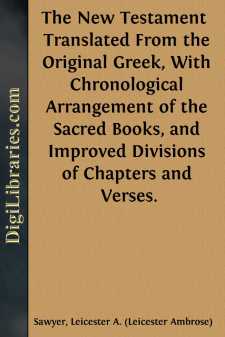Categories
- Antiques & Collectibles 13
- Architecture 36
- Art 48
- Bibles 22
- Biography & Autobiography 813
- Body, Mind & Spirit 142
- Business & Economics 28
- Children's Books 17
- Children's Fiction 14
- Computers 4
- Cooking 94
- Crafts & Hobbies 4
- Drama 346
- Education 46
- Family & Relationships 57
- Fiction 11829
- Games 19
- Gardening 17
- Health & Fitness 34
- History 1377
- House & Home 1
- Humor 147
- Juvenile Fiction 1873
- Juvenile Nonfiction 202
- Language Arts & Disciplines 88
- Law 16
- Literary Collections 686
- Literary Criticism 179
- Mathematics 13
- Medical 41
- Music 40
- Nature 179
- Non-Classifiable 1768
- Performing Arts 7
- Periodicals 1453
- Philosophy 64
- Photography 2
- Poetry 896
- Political Science 203
- Psychology 42
- Reference 154
- Religion 513
- Science 126
- Self-Help 84
- Social Science 81
- Sports & Recreation 34
- Study Aids 3
- Technology & Engineering 59
- Transportation 23
- Travel 463
- True Crime 29
Our website is made possible by displaying online advertisements to our visitors.
Please consider supporting us by disabling your ad blocker.
Spirit and Music
Categories:
Description:
Excerpt
THE SPIRIT OF MUSIC
"Art is the Manifestation of the Spiritual by means of the Material"
Newlandsmith
Music is a part of life. It is not merely an accomplishment or a hobby, nor yet a means of relaxation from the strenuous business of earning a living. It is not an addendum or an excrescence: it is an actual part of the fabric of life itself. The object of these pages will be to show how closely Music, and indeed Art in general, has woven itself into the pattern of our lives, and how intimately it may influence and fashion the design.
The structural basis of Music is vibration. Sound comes to us in the guise of air-waves, which impinge upon the drum of the ear. The nerve-impulse thus aroused is conveyed to the brain, and there translated into sound. Strictly speaking there is thus no sound until the brain translates the message, while if the machinery of the ear be too dull to answer to the vibration the sound simply does not exist for us. Beyond doubt the world is full of sounds that we cannot hear and of sights that we never see, for of the whole range of vibration our senses permit us to garner but the veriest fragment—a few notes here of sound, and a brief range there of sight, out of the whole vast scale of vibrant Nature.
There are sounds which are musical, and others that are raucous and mere noise. The difference lies in the fact that harsh sounds are compounded of irregular vibrations, while the essence of Music is that its waves are rhythmic and follow each other in ordered swing. Rhythm is thus the primary manifestation of Music: but equally so it is the basic characteristic of everything in life. We learn that in Nature there is nothing still and inert, but that everything is in incessant motion. There is no such thing as solid matter. The man of Science resolved matter into atoms, and now these atoms themselves are found to be as miniature universes. Round a central sun, termed a Proton, whirl a number of electrons in rhythmic motion and incessant swing. And these electrons and protons—what are they? Something in the nature of charges of electricity, positive and negative. So where is now our seeming-solid matter?
When this knowledge informs our outlook we see that all that lives, moves: and even that which never seems to move, lives also in continual rhythm and response. The eternal hills are vibrant to the eye of science, and the very stones are pulsing with the joy of life. The countryside sings, and there is the beat of rhythm not merely in our hearts but in every particle of our body. Stillness is a delusion, and immobility a fiction of the senses. Life is movement and activity, and rigidity and stiffness come more near to what we understand as death. Yet even in death there is no stillness, there is but a change in the form of activity. The body is no longer alive as an organised community, but in its individual cells: the activity is the liveliness of decomposition. Thus all the world expresses life, and expresses it in a rhythm in which law and order reign supreme, and in which a sweet and sane regularity is the ordinance....












